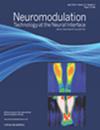Repetitive Transcranial Magnetic Stimulation for Motor Recovery After Stroke: A Systematic Review and Meta-Analysis of Randomized Controlled Trials With Low Risk of Bias
IF 3.2
3区 医学
Q2 CLINICAL NEUROLOGY
引用次数: 0
Abstract
Objectives
Repetitive transcranial magnetic stimulation (rTMS) has shown promising results in enhancing motor recovery after stroke, but nuances regarding its use, such as the impact of the type and site of stimulation, are not yet established. We aimed to perform a systematic review and meta-analysis of randomized controlled trials (RCTs) with low risk of bias to investigate the effect of rTMS on motor recovery after both ischemic and hemorrhagic stroke.
Materials and Methods
Three databases were searched systematically for all RCTs reporting comparisons between rTMS (including theta-burst stimulation) and either no stimulation or sham stimulation up to August 19, 2022. The primary outcome measure was the Fugl-Meyer Assessment for Upper Extremity (FMA-UE). Secondary outcome measures comprised the Action Research Arm Test, Box and Block Test, Modified Ashworth Scale for the wrist, and modified Rankin Scale (mRS).
Results
A total of 37 articles reporting 48 unique comparisons were included. Pooled mean FMA-UE scores were significantly higher in the experimental group than the control group after intervention (MD = 5.4 [MD = 10.7 after correction of potential publication bias], p < 0.001) and at the last follow-up (MD = 5.2, p = 0.031). On subgroup analysis, the improvements in FMA-UE scores, both after intervention and at the last follow-up, were significant in the acute/subacute stage of stroke (within six months) and for patients with more severe baseline motor impairment. Both contralesional and ipsilesional stimulation yielded significant improvements in FMA-UE at the first assessment after rTMS but not at the last follow-up, while the improvements from bilateral rTMS only achieved statistical significance at the last follow-up. Among the secondary outcome measures, only mRS was significantly improved in the rTMS group after intervention (MD = −0.5, p = 0.013) and at the last follow-up (MD = −0.9, p = 0.001).
Conclusions
Current literature supports the use of rTMS for motor recovery after stroke, especially when done within six months and for patients with more severe stroke at baseline. Future studies with larger sample sizes may be helpful in clarifying the potential of rTMS in poststroke rehabilitation.
重复经颅磁刺激治疗脑卒中后的运动恢复:低偏倚风险随机对照试验的系统回顾和元分析》。
目的:重复经颅磁刺激(rTMS)在促进中风后的运动恢复方面显示出良好的效果,但其使用的细微差别,如刺激类型和刺激部位的影响,尚未确定。我们旨在对偏倚风险较低的随机对照试验(RCT)进行系统回顾和荟萃分析,以研究经颅磁刺激对缺血性和出血性脑卒中后运动恢复的影响:系统检索了三个数据库中截至 2022 年 8 月 19 日报告经颅磁刺激(包括θ-脉冲刺激)与无刺激或假刺激之间比较的所有 RCT。主要结果指标为上肢福格-迈耶评估(FMA-UE)。次要结果测量包括行动研究手臂测试、箱形和块状测试、腕部改良阿什沃斯量表和改良兰金量表(mRS):结果:共纳入 37 篇文章,报告了 48 项独特的比较。在干预后(MD = 5.4 [校正潜在发表偏倚后,MD = 10.7],p < 0.001)和最后一次随访时(MD = 5.2,p = 0.031),实验组的 FMA-UE 平均得分明显高于对照组。在亚组分析中,干预后和最后一次随访时的 FMA-UE 评分在中风急性/亚急性阶段(6 个月内)和基线运动障碍更严重的患者中均有显著改善。在经颅磁刺激后的首次评估中,对侧和同侧刺激均可显著改善 FMA-UE,但在最后一次随访中却没有改善,而双侧经颅磁刺激的改善只有在最后一次随访中才具有统计学意义。在次要结局指标中,只有经颅磁刺激组在干预后(MD = -0.5,p = 0.013)和最后一次随访时(MD = -0.9,p = 0.001)的mRS有明显改善:目前的文献支持使用经颅磁刺激治疗脑卒中后的运动恢复,尤其是在六个月内和基线脑卒中较严重的患者。未来样本量更大的研究可能有助于明确经颅磁刺激在脑卒中后康复中的潜力。
本文章由计算机程序翻译,如有差异,请以英文原文为准。
求助全文
约1分钟内获得全文
求助全文
来源期刊

Neuromodulation
医学-临床神经学
CiteScore
6.40
自引率
3.60%
发文量
978
审稿时长
54 days
期刊介绍:
Neuromodulation: Technology at the Neural Interface is the preeminent journal in the area of neuromodulation, providing our readership with the state of the art clinical, translational, and basic science research in the field. For clinicians, engineers, scientists and members of the biotechnology industry alike, Neuromodulation provides timely and rigorously peer-reviewed articles on the technology, science, and clinical application of devices that interface with the nervous system to treat disease and improve function.
 求助内容:
求助内容: 应助结果提醒方式:
应助结果提醒方式:


